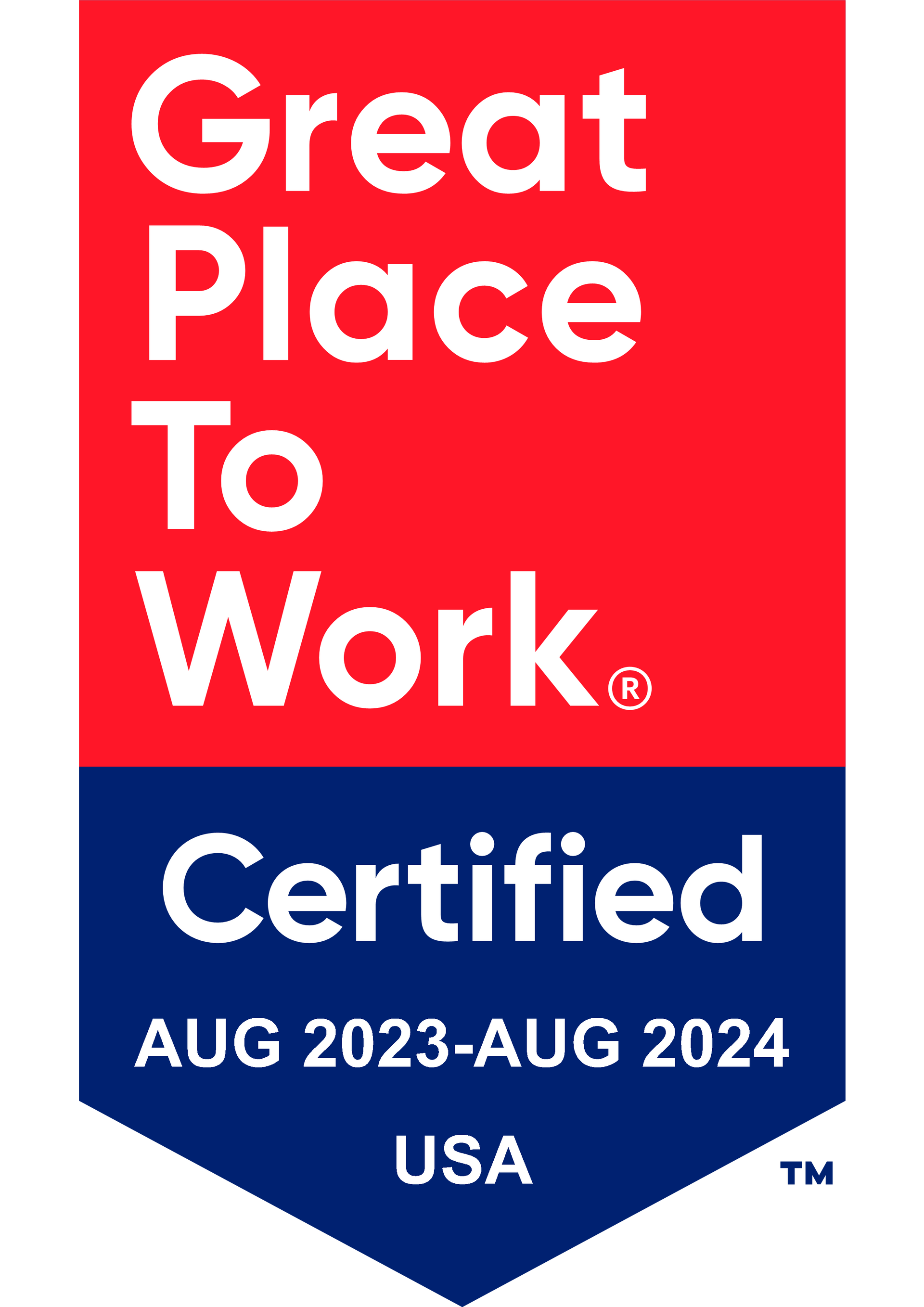Get in touch
408-366-8880
mymail@mailservice.com

What Is ICHRA and What Does This HRA Expansion Plan Mean?
Employers continue facing challenges in providing quality healthcare options for valued employees. Between out-of-control health insurance costs, reduced employee retention, and ACA non-compliance, employers need meaningful alternative options in healthcare.
Dutiful employers have sought solutions in traditional and non-traditional healthcare options with varying degrees of success, but a potential game-changer lies on the horizon.
The Individual Coverage Health Reimbursement Arrangement (ICHRA) becomes available in January 2020 to businesses of all types and sizes, offering new hope to employers in providing high-quality, affordable healthcare to employees.
WHAT IS ICHRA?
Pronounced “ick-rah,” ICHRA is a new health reimbursement arrangement, or HRA, available to employers Jan. 1, 2020. This new coverage represents a newly designed model of employer-covered insurance to better meet the health needs of employees and the budgets of employers.
Another alternative to traditional group health insurance, ICHRA reimburses medical expenses that include payouts for copayments, deductibles, and monthly premiums.
Sometimes referred to as individual integrated HRA, ICHRA is an employer-funded health plan with tax advantages that make it possible to reimburse employees for medical expenses.
Introduced through new federal regulations from the Department of Health and Human Services (HHS), the Department of Treasury and the Department of Labor (DOL), and the Department of Treasury (USDT) in October 2018, ICHRA was finalized in June 2019. The new health plan option will become available to everyone in January 2020.
This new HRA plan distinguishes itself from other HRAs with its availability to organizations of every size. ICHRA offers additional freedoms to employers and employees since it has no allowance caps or adjustments. Further, it allows businesses to vary allowance and eligibility amounts among different employee classifications.
A REVIEW OF THE HRA DEFINITION TO BETTER UNDERSTAND THE VALUE OF ICHRA
It is important for benefits managers to better understand what an HRA is — the HRA rules, the HRA tax rules, and more — before diving headlong into ICHRA and its exciting industry potential.
ICHRA is one of a few offshoots of the HRA, which is an employer-funded health plan that allows for reimbursements to employees for all qualified medical expenses. Sometimes employees receive reimbursements on paid premiums.
Employers may also claim a tax deduction for any reimbursements they made through qualifying HRAs, per Investopedia. These reimbursed dollars go to employees and are often tax-free.
HOW DOES AN HRA WORK?
Once an employer chooses to provide insurance through an HRA plan to cover medical expenses for employees, they decide how much to put into the plan. Once the employer sets the amount, employees may request reimbursement for all medical expenses incurred and paid up to that decided amount. All employees classified the same must receive the same HRA contribution from employers.
An important HRA definition to remember is that it is not an account. Employees may not and cannot withdraw health funds in advance. They must first incur and pay health expenses then submit documentation for reimbursement. The way HRA coverage works is that employees must first incur a healthcare expense and pay for it themselves. Employees will receive reimbursement later.
However, employees may receive reimbursement at time and point of service if their employer provides them with an HRA debit card to use for such purposes.
An employee has access to allocated funds for one year. If an employee uses all the allocated funds in their employer’s HRA before the end of the year, they will need to pay for any subsequently incurred health bills out of pocket. For this reason, many employees set up a Flexible Spending Account (FSA), which some refer to as a flexible spending arrangement.
Another alternative payment method for times when employees run low on allocated funds at year’s end is the Health Savings Account (HSA), which is intended for employees who need a High-Deductible Health Plan (HDHP).
Take a moment to review these alternative payment options and surrounding matters:
FLEXIBLE SPENDING ACCOUNT (FSA)
A flexible spending account, or an FSA, is available to employees to fund deductibles, pharmaceuticals, copayments and some additional healthcare costs, depending on the plan. FSAs often reduce employee taxes. The FSA works as a special account in which employees can put money intended for certain out-of-pocket healthcare costs and when they have exceeded their annual allocated HRA budget. Employers may contribute to FSAs, but they have no obligation to do so.
HEALTH SAVINGS ACCOUNT (HSA)
A health savings account (HSA) is a savings account for employees that allows them to set aside pre-tax funds to pay for any qualified medical expenses. With these untaxed dollars, employees can settle copayments, deductibles, coinsurance, pharmaceuticals, and other qualifying healthcare expenses. In most cases, HSA funds may not move toward premium costs. The best part is that an HSA often allows employees to lower their overall healthcare costs.
Employees can access and use funds in an HSA as needed for qualifying healthcare costs, but only employees carrying a HDHP may contribute to an HSA. Such plans only cover preventive services before the application of the deductible. Employees should check with their employer to determine whether their health insurance company offers HSAs for their HDHP customers. Employees may open their own HSA through participating banks and other financial institutions.
HIGH DEDUCTIBLE HEALTH PLAN (HDHP)
A high deductible health plan (HDHP) is a plan that features a higher deductible than a traditional insurance plan. Employees pay a lower monthly premium but pay healthcare costs out of pocket before the insurance company begins to pay its share, which is the employee’s deductible.
Many employees combine an HDHP with a HSA to allow employees to pay for certain medical expenses with tax-free funds.
According to the IRS via HealthCare.gov, an HDHP as of 2019 is any plan with a deductible of at least $1,350 for an individual and $2,700 for a family. For 2020, an HDHP features a deductible of $1,400 for an individual and $2,800 for a family.
THE BENEFITS OF A BASE HRA
The sheer number and type of qualified medical expenses covered under a base HRA is reason enough for many employers and employees to consider this healthcare option.
Here are a few qualifying medical expenses:
- Prescription medications such as insulin
- Annual physical examination
- Birth control pills
- Crutches and other support devices
- Psychology and psychiatry care
- Substance abuse treatment
- Meals during treatment at a medical facility
- Transportation costs spent to get medical care
However, under the rules set forth by the Obama administration, HRA funds may not pay for individual health insurance premiums.
HRAs offer more flexible options for both employers and employees in accessing high-quality healthcare at reasonable prices.
Here are a few final points on general HRA rules:
- Who Funds An HRA?Employers fund HRAs, not employees.
- Is an HRA a Portable Benefit?Employees may not take their HRAs with them upon leaving a company; therefore, an HRA is not portable.
- What Types of Expenses Do HRAs Fund?Depending on the type of HRA, coverage varies but usually includes reimbursement of health, vision and dental insurance premiums, along with all other qualified medical expenses.
- Must Employers Abide by All Government Rules Surrounding HRAs?Employers may refine the government rules on HRAs to determine which expenses are reimbursable for employees.
- Are the Rules the Same for All Types of HRAs?The rules for each type of HRA, including ICHRA and QSEHRA (see below), differ substantially. It is important to know the basic HRA rules then keep them in mind while learning the new types of HRAs as a foundation.
QSEHRA WAS THE INSPIRATION AND MODEL FOR ICHRA
ICHRA was a creation inspired by and evolved out of another type of HRA, known as the Qualified Small Employer Health Reimbursement Arrangement (QSEHRA), created in 2017. QSEHRA is similar to ICHRA in that it allows employers to reimburse employees with tax-free funds for all qualified individual medical insurance expenses. However, ICHRA is set to take this feature to new levels, offering higher limits and greater flexibility. The anticipation for ICHRA is high for employers and employees.
QSEHRAs were designed and deployed to help small employers help employees when they don’t offer any form of traditional health coverage. With a QSEHRA, an employer helps employees pay for healthcare expenses.
When an employer offers employees a QSEHRA plan, they may use it to pay for their entire household’s healthcare and qualifying products and services, which includes the monthly premium.
Employees offered a QSEHRA may still be eligible for a tax credit through the Marketplace. The amount of the tax credit will depend on the amount of each employee’s plan. The information is not available to employees at the time of application; therefore, there are times employees do not know the accurate amount of their available credit until after incurring expenses. With that in mind, employees should refrain from using any tax credit information shown on the Marketplace eligibility notice to guide their spending choices.
HOW DO EMPLOYEES USE QSEHRA?
Employees use their QSEHRA to pay for their health costs throughout the year. If the Marketplace finds an employee’s family eligible for savings, the employee should use none, or as little as possible, of their tax credit when prompted by the Marketplace.
Employees may use the Healthcare.gov QSEHRA worksheet PDF to calculate and determine the amount of tax credit the employee should take in advance to lower their monthly premium, which is based on their QSEHRA. It is important to use less than the amount of the available tax credit to avoid the need to pay some or all of it when the employee files their federal income tax return.
Ideally, employees refrain from using their tax credit throughout the year to avoid needing to pay anything back to the government.
HOW DOES ICHRA STAND OUT FROM QSEHRA AND OTHER HRAS?
Touted as the new “super-charged” version of QSEHRA, ICHRA stands ready to impress employers and employees looking for solutions to the healthcare conundrum many face.
One of the premier markers of ICHRA is that it allows employers to offer employees tax-free reimbursement for health insurance available on the individual market, allowing employers to offer benefits without offering a group health plan.
This expansion HRA from the QSEHRA provides higher limits and greater flexibility, which alone is more appealing to employers.
HOW DOES ICHRA WORK?
Like other HRAs, ICHRA focuses on the common theme of reimbursing employees for incurred medical costs instead of buying an insurance plan for them.
Here is a basic layout of how the ICHRA works:
- Employers choose and design their health plan, including their means of defining which employees may participate and determining reimbursement limits.
- Employees review their available options and purchase the individual plans that appeal to them.
- Employees visit doctors and pay other health bills upfront, and then submit claims for reimbursement.
- Employers review claims and reimburse employees for all valid and qualifying claims.
In any business, employers may define unique reimbursement amounts and rules for different groups or classes of employees. In the ICHRA landscape, these groups are known as “classes.” Here are some available distinctions to help employers segment classes:
- Full-time, part-time, seasonal or temporary status
- Salaried or non-salaried pay conditions
- Coverage waiting periods
- Geographic rating areas
Using these distinctions to classify employees within the ICHRA ecosystem offers employers a broad range of flexibility. With this tool, employers can create a unique plan that works for every employee’s unique circumstances within the organization.
WHAT ARE THE BENEFITS OF ICHRA?
The many advantages of ICHRA are already clear to industry experts and employers who have reviewed it.
Here are a few key benefits of ICHRA:
- Many employers and employees want more flexibility in their health plans, and ICHRA comes through. ICHRA offers impressive new levels of flexibility for employers of all types and sizes, which alone levels the playing field for smaller businesses. Employers may choose the contribution amount that best suits their budgets without any caps. The previously mentioned employee classes give employers and employees the freedom to tailor their ICHRA to each employee’s unique situation in the organization.
- Employee Attraction and Retention.Given the choice between working for a small business with healthcare and one without, employees are likely to choose the former. The workplace becomes increasingly competitive as the environment itself changes constantly. Further, talented employees have become more selective as the business landscape continues to change in their favor. Younger generations of workers, which are becoming an increasingly large demographic in the workforce as baby boomers retire, are far more likely to leave an organization that does not have benefits for one that does. ICHRA helps employers provide benefits as unique as their employees.
- ACA Compliance.ICHRA makes it easier for employers and employees to meet IRS-mandated compliance for ACA. By using factors such as geographic area and employee age, it is easier to determine affordability.
- Controlled Costs and Risks.One primary benefit of ICHRA for employers is that it gives employers the opportunity to control the spiraling costs of benefits in the medical industry, thereby controlling their cost risks to ward off the ever-increasing premium increases. Basically, employers can choose to cover as much or as little as aligns with their budget and operating costs.
- Tax Efficiency.ICHRA offers several tax-related benefits, starting with the feature that any amount an employer contributes does not count as employee wages, meaning that they are not subject to payroll taxes. Additionally, employer payments for features like a health and welfare plan qualify as a business expense. For employees, employers’ contributions do not count as gross income, meaning the funds are tax-free. Finally, if an employee owes any amount over the employer’s contribution, and the employer agrees to a pre-tax deduction, the employee’s individual policy may be paid tax-free.
- ICHRA allows businesses to set up and administer their own health plan.
IS THERE A DOWNSIDE TO CHOOSING ICHRA?
While the benefits of ICHRA are impressive, it is important to explore potential downsides, like the following:
- Spouse group plans are unavailable, meaning that employees participating in a partner’s group plan through another employer may not participate in their own employer’s ICHRA.
- Sharing plans are not included, meaning that ICHRA does allow for sharing plans like Samaritan Ministries and MediShare.
- Like other HRA rules, ICHRA does not allow for integration with TRICARE.
- When ICHRAs are deemed “affordable,” no premium tax credits are available.
ARE YOU CONSIDERING TRYING OUT ICHRA?
In spite of any negatives associated with ICHRA, the early reviews are impressive.
Are you looking for a healthcare solution for your employees but need more information? Our KBI Benefits team can help offer additional insights into this exciting new HRA expansion.
Contact us to learn more about ICHRA and how it can benefit your business.
Services
Latest Thinking




